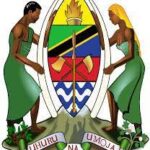About sixty years ago the first President of the United Republic of Tanzania, the late Mwalimu Julius K. Nyerere, recognized the integral part wildlife plays in this country.
In September 1961 at a symposium on the Conservation of Nature and Natural Resources, he gave a speech that laid the foundation for conservation in post-independent Tanzania. The extract of that speech has become known as the Arusha Manifesto.
The survival of our wildlife is a matter of grave concern to all of us in Africa. These wild creatures amid the wild places they inhabit are not only important as a source of wonder and inspiration but are an integral part of our natural resources and our future livelihood and well being.
In accepting the trusteeship of our wildlife, we solemnly declare that we will do everything in our power to make sure that our children’s grandchildren will be able to enjoy this rich and precious inheritance.
The conservation of wildlife and wild places calls for specialist knowledge, trained manpower, and money and we look to other nations to co-operate with us in this important task – the success or failure of which not only affects the continent of Africa but the rest of the world as well.”
Names Call For Job TANAPA Released Today 14th April 2020, Kuitwa Kazini TANAPA
Establishment
The Tanganyika National Parks Ordinance CAP [412] of 1959 established the organization now known as Tanzania National Parks (TANAPA), and Serengeti became the first National Park. Currently, TANAPA is governed by the National Parks Act Chapter 282 of the 2002 revised edition of the Laws of the United Republic of Tanzania.
Conservation in Tanzania is governed by the Wildlife Conservation Act of 1974, which allows the Government to establish protected areas and outlines how they are organized and managed. National Parks represent the highest level of resource protection that can be provided. By September 2019, TANAPA has grown to 22 national parks, covering approximately 99,306.5 square Kilometers.






